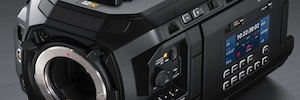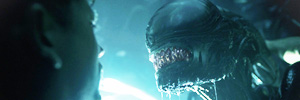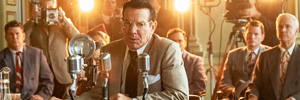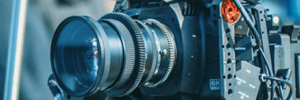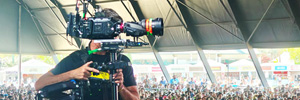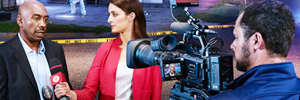Fusion Studio, key tool for the post-production of ‘Dumb Money’
The visual effects supervisor for ‘Dumb Money’, Sam O’Hare, used Blackmagic Design’s Fusion Studio and DaVinci Resolve solutions to tackle the visual effects for this film about the world of Internet trading.
Dumb Money is based on a true and unusual story of ordinary people who turned Wall Street upside down and got rich by turning video game retailer Arrêt de jeu into the most coveted company in the world. The plot revolves around Keith Gill, the main character played by Paul Dano, who decides to invest all his savings in the stock market and discuss it on social media. When his posts begin to generate interest, his life and the lives of those who follow him change forever. As the stock trades gain momentum, everyone gets richer, until the millionaires strike back, and chaos ends up reigning on both sides.
O’Hare, a visual effects supervisor based in New York City, was responsible for the team that produced more than 500 shots for the feature. “I’ve been using Fusion for years. It’s still my go to when I need to execute compositing quickly and efficiently. For ‘Dumb Money’ I had four VFX vendors, but due to logistics and budget constraints, it made sense for me to handle some of the shots myself, for which I turned to Fusion.”
Because online news and stock trading played an important role in the film’s plot, O’Hare employed Fusion Studio on a lot of screen close-ups. “Screens play a big part in the film, and we had a variety of shots that were extreme closeups on graphics,” he explained. “In Fusion, I built a look for the closeup shots of the screens using reference photography of screen LEDs as a base and concatenated transforms to downres and pixelate the provided graphics and footage. These were combined using various blend modes and color corrects and finished off with vignettes, defocus and grain.”
“Since I was executing a lot of shots and needed to keep my naming conventions straight, I wrote various Python scripts for Fusion to give me a basic pipeline. These ensured my OpenColorIO pipeline was accurate, my files and outputs were always named correctly, and my frame range was always set, as well as built slates and burn ins that automatically updated per shot,” he said.
DaVinci Resolve on Dumb Money
O’Hare also turned to DaVinci Resolve Studio to manage the effects shots produced by the four vendors involved in the project, again relying on the software and Fusion to create scripts: “I also used Python scripting to speed up my use of Resolve, which I turned to when reviewing shots because I needed to sync up the color between the LogC4 plates, Linear EXRs and Rec.709 editorial references. Using an exported list of shots, my script would make a Resolve sequence with all those elements added, color coded, and the QuickTimes trimmed to length. A second script used DaVinci Resolve’s Fusion page and Resolve’s native nodes to automatically add the correct gamut and OpenColorIO color transform for each EXR sequence. This meant I could easily check shot length, transform, and color, and look at cleanup and keying work against the plate with a click of a button, as well as play everything back in real time at 4K.”
“Since I also wanted to check the differences between versions, I wrote a third script that would automatically search for other versions of EXR sequences or QuickTimes in the folder and move to the next or previous one with a keystroke. All of this allowed me to eliminate a lot of busy work and focus on the imagery. Setting up a hundred shots for review was as simple as doing one. Lastly, I used Resolve to output sequences for approval by the director,” adds O’Hare.
Creating “Invisible” visual effects
Although much of O’Hare’s work on the film is not obvious, to him, this is the highest praise he could receive: “It’s all intended to be invisible VFX, so when the audience doesn’t realize it’s there, that’s the biggest compliment. All in all, we had more than 500 VFX shots in the movie, including bluescreen car sequences, a whole load of screens, environment replacement for dozens of trees with CG to turn autumn into winter, and adding actors into scenes for which they couldn’t be scheduled and had to be shot separately.”
“The main things I return to Resolve et Fusion for are their ease of use and speed. I can often accomplish something in a matter of minutes that would take a lot longer in other software. I’m also confident in their color management which is vital for a VFX pipeline. Without using Fusion and Resolve, we wouldn’t have been able to execute all the work that needed to happen within the schedule and budget, simple as that. By relying on those tools, I was able to respond in a timely manner to vendors, execute shots, keep producers and the director up to speed, and not have to work crazy hours to make it all happen,” O’Hare concludes about his work on Dumb Money.
Cet article vous a plu ?
Abonnez-vous à notre Nourrir Et vous ne manquerez rien.







